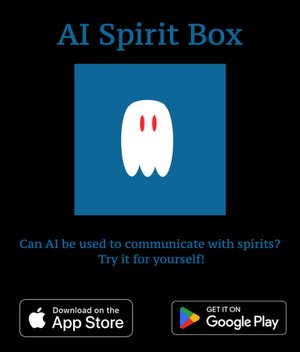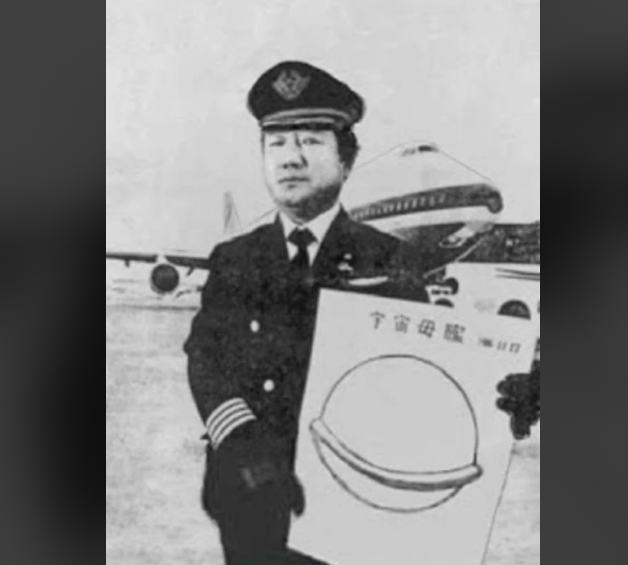Flight 1628: Aircraft Manoeuvres to Avoid UFO
Captain Terauchi with a drawing of what he saw during Flight 1628
On November 17, 1986, a Japan Airlines flight was stalked for 30 minutes by several UFOs. These UFOs were also seen by the Anchorage Federal Aviation Administration who advised the pilot to take evasive action.
Two Small Ships and a Mothership
Captain Kenju Terauchi, a former fighter pilot and seasoned airline captain with over 10,000 hours of flight experience, was assigned to command a Japan Airlines cargo flight from Paris to Reykjavik, Anchorage, and then on to Tokyo.
At 5:09 pm Alaska time on November 17, the Anchorage Air Route Traffic Control Center communicated with JAL 1628, located approximately 104 miles northeast of Fort Yukon. The flight controller instructed the pilot to adjust the heading to pass south of Fort Yukon and Fairbanks. Responding to this, the copilot initiated a left turn of about 15 degrees. Captain Terauchi, seated on the left side of the cockpit, noticed unidentified lights below and to the left through his window. Initially assuming them to be military aircraft, he disregarded them. However, he soon realized these unidentified objects were keeping pace with their aircraft.
Flight 1628 made two rapid inquiries to the Anchorage Center, seeking clarification on any other aircraft in the vicinity. The Center confirmed the absence of military aircraft and reported that ground radar detected only Flight 1628. Subsequently, the two lights began displaying erratic movements.
Terauchi’s Account
The large mothership as described by Terauchi
At first, the lights appeared distant, so there was no immediate sense of danger. Captain Terauchi began to speculate that they might be UFOs due to their peculiar movements. Suddenly, two large spacecraft emerged directly in front of the plane, emitting bright lights. The cockpit was illuminated brightly, and the warmth from the UFOs' thrusters could be felt on Terauchi's face. After a brief moment, the fiery illumination ceased, transforming into small circles of light flying alongside at the same speed. The middle of the ships emitted sporadic bursts of light, resembling a glowing fire. Their size was comparable to a large aircraft, flying slightly higher and just ahead.
The inexplicable nature of such an encounter struck Captain Terauchi, considering the impossibility for man-made machines to swiftly appear and maintain formation with a fast-moving aircraft. Nevertheless, there was no immediate sense of threat, only astonishment. The reasons behind their proximity remained a mystery.
A pale, white light marked the path where the ships departed, maintaining pace with the aircraft. Despite inquiries to the Anchorage Center, no objects were detected on their radar. However, the aircraft's weather radar revealed a significant green circle approximately seven or eight miles away in the same direction.
As they passed over the Eielson Air Force Base and Fairbanks, the city lights illuminated the terrain below. Suddenly Terauchi was confronted with the silhouette of a massive spaceship.
In coordination with the Anchorage Center, Captain Terauchi undertook evasive maneuvers, including circling and altering altitude. However, the massive UFO, described by Terauchi as comparable in size to two aircraft carriers, persisted in shadowing Flight 1628 regardless of their efforts.
Terauchi was terrified and felt concerned about what the UFOs were trying to achieve. The Anchorage Center proposed deploying a military jet, but Captain Terauchi opted against it, concerned about potential unintended repercussions of a military encounter with the unidentified craft. Around the same time, a United Airlines passenger jet entered the airspace and was instructed by air traffic control (ATC) to observe the situation visually. Terauchi recounted, "When the United plane approached our position, the spaceship abruptly vanished. The peculiar encounter concluded approximately 150 miles away from Anchorage."
The Investigation into Flight 1628
In 1986, John Callahan, holding the position of FAA Division Chief within the Accidents and Investigations Branch in Washington, DC, received an urgent call from Alaska approximately one week after the JAL 1628 incident.
During an interview conducted around 2000, Callahan recounted the event, expressing that an unidentified caller, whose identity he couldn't recall, conveyed a sense of urgency regarding media inquiries flooding the FAA office in Alaska. The caller informed Callahan about a UFO sighting involving a 747 aircraft that occurred a week prior.
Callahan instructed the caller to gather all available data, including civilian and military disks, and any accessible tapes, to be sent overnight to the technical center where he was stationed. Despite initial reluctance from the military to share their tapes, the caller managed to collect all available information from Anchorage Traffic Control.
Callahan further explained that they directed the caller to recreate the setup exactly as it was in Anchorage, aiming to project all gathered data onto the radar monitor, including radar, digital radar, and audio recordings, in order to gain a comprehensive understanding of the situation.
Upon reviewing the tapes, Callahan listened to a three-way conversation involving Anchorage Air Traffic Control (ATC), Elmendorf's NORAD Regional Operations Control Center (ROCC), and Captain Terauchi of JAL 1628. Additionally, he examined a tape displaying ATC radar sightings on a scope. Although Anchorage Air Traffic Control did not detect the UFOs on their radar, indications from their conversation suggested that the military was actively monitoring the UFOs. Callahan elaborated:
"The military controller possesses what they refer to as height-finding radar, along with long-range and short-range radar. Therefore, if they fail to detect an object on one system, they may catch it on another. Our radar system, however, did not record such sightings."
Details relayed by the military controller revealed that the UFOs were traveling at incredibly high speeds while navigating the airspace around the 747. Additionally, the military controller made another surprising observation: towards the end of the incident, a United Airlines flight was diverted to observe the JAL flight. Interestingly, Captain Terauchi no longer spotted the large UFO at that point, and neither did the United Airlines pilot. However, unbeknownst to both pilots, military radar clearly indicated that the UFO had concealed itself from view behind the United flight and had begun tailing it.
Following the presentation, Callahan's superior instructed him, "Don't communicate with anyone until I authorize it." The subsequent day, his superior organized a briefing, during which Callahan recounted, "I gathered all the personnel from the tech center. We assembled upstairs, armed with various data boxes and printouts that filled the room. Three individuals from the FBI, three from the CIA, and three from Reagan's scientific study team were brought in, alongside others whose identities I'm unsure of, but they all seemed enthusiastic."
Callahan and his team presented all their findings to the group and fielded numerous technical inquiries.
Upon concluding the briefing, the assembled individuals were actually sworn to secrecy, with instructions to deny the existence of the meeting and its recordings. This directive came from a CIA representative. Perplexed by this directive, Callahan questioned the rationale behind concealing such information. He reasoned that if the object observed wasn't the then-in-development Stealth Bomber, it could only be classified as a UFO. He questioned why the public shouldn't be informed. The CIA representative explained that disclosing such information to the American public would likely incite widespread panic, hence the decision to keep it classified. Despite this, Callahan retained copies of all the data in his office.
When asked for his opinion, Callahan expressed his belief that what they witnessed appeared to be a UFO. He noted that Reagan's scientific team shared his enthusiasm for the data, emphasizing that this was the first instance in which a UFO had been recorded on radar for an extended duration.
In the aftermath, Captain Terauchi was reassigned to a desk role within months of the incident, reportedly due to company embarrassment, although he was later reinstated. As for Callahan, he retired from the FAA, transitioning into a career as an industry consultant, and periodically shared the true account of JAL flight 1628.
More UFO Accounts:
The Strange Disappearance of Pilot Frederick Valentich
The Mysterious Dome of Light Seen by Military Aircraft
Are you Interested in Spirit Communication? Try our AI Powered Spirit Box!
































